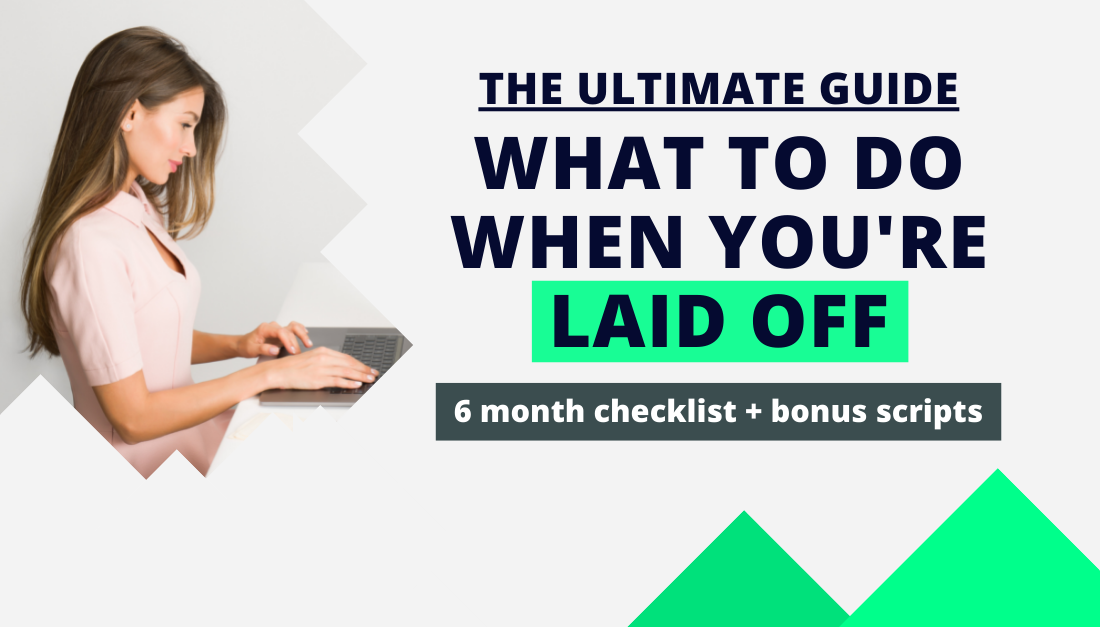
What To Do When You're Laid Off | The Ultimate 6 Month Guide
One of the hardest moments in anyone’s career is what to do when you’ve been laid off.
It doesn’t matter if you’re at the beginning of your career or a seasoned professional, getting laid off is a shocking experience.
That’s because a layoff is an abrupt change. It changes your schedule, your relationships, and even your feelings of self-worth.
Some people will tell you that getting laid off was one of the best things that ever happened to them. And this may be true.
But I don’t think anyone would say that the process after they’ve been laid off was pleasant.
The good news is that there are ways to make this process easier and in this guide I’ll show you just that.
I’ll show you:
- What to do after being laid off
- Month by month actions you should take
- How to protect yourself financially
- How to preserve your self-worth
- How to land your next job 3-6 months faster
I’ll show you the exact steps to minimize the damage of being laid off while also maximizing the chances that you’ll land a great role.
These recommendations are based on the job seekers I’ve helped, the award-winning career coaches I’ve worked with, and the strategies that I tested myself when I was laid off.
👉 It’s important to keep in mind that 40% of Americans have been laid off or terminated from a job at least once.
Many people have gone through what you’re going through right now AND many of them have ended up in better positions as a result.
So, here’s what to do when you’re laid off. Let’s get into it!
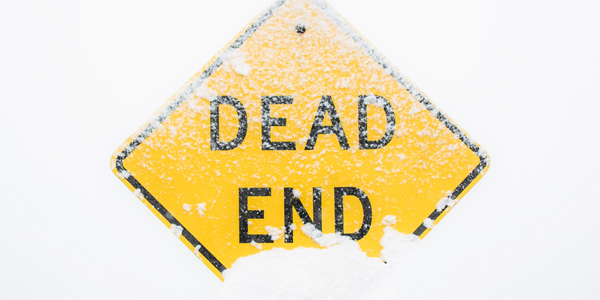
Laid off vs fired
Laid off definition: being laid off is when an employer terminates your employment and it’s unrelated to your performance.
Your employment with a company is usually what’s known as “at-will employment.” At-will employment means that, just like you can quit your job any time you want, the employer can terminate your employment anytime they want.
The difference between being laid off and being fired is the reason your employment is being terminated.
If you’ve been fired, it means that your performance was subpar. If you’ve been laid off, it means that it’s unrelated to your performance.
That being said, even though being laid off isn’t related to your performance, it sure can feel that way.
Career Transition Specialist, John Lees, says:
“The old adage that it’s not about you is nonsense. It’s a rejection — the company is saying, ‘We don’t need you. We can manage without you.’ It feels personal.”
And I tend to agree with this. Being laid off may not be personal to the company doing the layoffs, but it affects us personally regardless.
If you’re dealing with some anxiety from being laid off, I recommend reading this short layoff anxiety guide from Executive Career Coach Sarah Johnston.
The important thing to keep in mind is that whether you’ve been laid off or whether you’ve been fired, you can absolutely recover and even improve your situation.
Lees explains,
“Getting laid off is a manageable setback on the scale of human experience. Try to think about it as an opportunity that’s ultimately going to do you some good.”
Managing your psychology and staying positive will be key to succeeding after you’ve been laid and in this guide I’ll show you how to do just that.
What is the average time to find a job after a layoff?
According to the Bureau of Labor Statistics, the average job search takes between 5–6 months. If that number feels too long and daunting, there are ways to speed up the process (which I’ll cover a little later in the post).
The truth is that most job searches do actually take about 3–6 months, and this is no different if you’ve been laid off. This one reason why it's so important to negotiate a good severance package within the first 30 days after getting laid off.
Job search is a marathon, not a sprint, which is why in this guide I’ll share what to do during every month of your job search after being laid off.
👉 Now, you may need to go through these steps faster or slower depending on your financial situation and your goals.
No matter what you do though, don't start panic blasting out your resume to every job posting you see.
If you're wondering "why not?" I recommend watching this 3-minute video by Career Coach Jess Smith:
My one word of advice is don’t try to rush the process too much. I’ll show you some shortcuts to cut this time down to 2–4 months, but for the most part you should prepare for 3–6 months just to be safe.
Alright, let's start with what you should do during the first month after you're laid off.
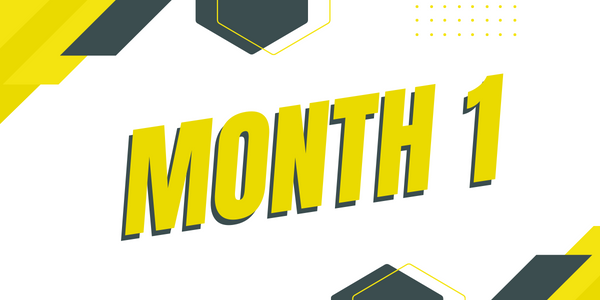
Month 1 | What to do after you’re laid off
There are three immediate actions you’ll want to do when you’ve been laid off. The first month after you’ve been laid off is actually the most important in my opinion.
The first 3 things to do after you’ve been laid off are:
- Write down your accomplishments
- File for unemployment
- Check your insurance options
- Post on LinkedIn & “Layoff Lists”
Let’s break down how to do each of these activities...

Step #1 | Write down your accomplishments
Besides negotiating a severance package, the first thing you'll want to do after being laid off is to stop and write down your accomplishments.
You should do this despite how low you might be feeling in this moment.
That's because during the first month after you’ve been laid off you’ll still have your work confidence.
What is “work confidence” you might be asking?
Work confidence is the belief that you can do your job well. It’s the belief that you’re capable, you provide value, and you’re employable.
When we’re employed it’s very easy for us to take these beliefs for granted, I know I certainly did.
The single biggest lesson I learned when I was laid off (and other job seekers can confirm this) is just how fragile work confidence is.
Nick Katz, a former Business Analyst and friend of mine who was laid off explained this best:
“After you get laid off, you’ll think you’re the worst. You’ll start thinking, ‘no one will ever want to hire me again.’ That’s why it’s so important to begin re-establishing your value (to yourself) as soon as you can.”
In some respects, it’s inevitable you’ll lose your work-confidence.
But that’s okay.
What you should focus on immediately after you’ve been laid off is writing down all the accomplishments that you achieved while you were employed.
This can sometimes be hard to do, so here are a few questions you can use.
Best questions to ask yourself after you’ve been laid off:
- What did you improve? This could be a process, a system, even just a single metric.
- Who did you work well with? How did you help them?
- What did you collaborate on? Who did you collaborate on it with? (These will be super important to talk about during the interview process)
- What problem did you solve for the company?
- In what areas did you go above and beyond your role?
- How did you help improve company culture?
The very first thing to do when you’ve been laid off is to open a notebook or google doc, and just write down all the positive impact you had in your role.
These will not only come in handy when you need to refresh your resume, but also if your job search ends up dragging on and your morale sinks.
I repeat, do this FIRST.
Before you get dragged down by draining activities like unemployment paperwork, insurance comparisons, and self-loathing.
As you write down your accomplishments, it’s also good to try to add some numbers where possible.
Keep in mind, these don't need to be exact numbers. After all, no one really cares if you increased sales by exactly 43% or just 40%.
If you’re having trouble thinking of numbers, here’s a great tutorial by Australian Career Consultant, Gillian Kelly, that explains how to find some numbers:
Step #2 | File for unemployment
After you’ve written down your accomplishments, the second action you’ll want to do after you’ve been laid off is file for unemployment.
At first, unemployment checks may seem like a minuscule amount of money, but they can also be a lifesaver.
When I was fired from a job, I didn’t have any unemployment benefits so I had to start driving for Uber. It paid very little and it sucked a lot of precious time away from applying for jobs.
Trust me, every little bit of money coming in helps.
Every state uses their own formula for calculating how much you get from unemployment. All states do, however, use your previous earnings from the last 52-week period that you were employed.
To file for unemployment after you’ve been laid off you’ll want to google “How to file for unemployment in [your state].”
This will take you to the appropriate site where you can fill out the forms online.
Here’s what California’s unemployment site looks like for reference:
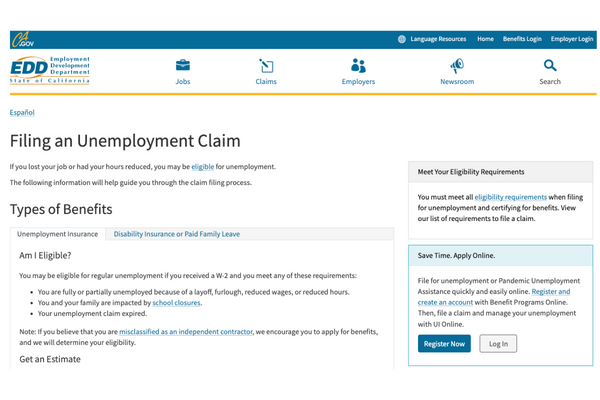
Some states even have an unemployment benefit calculator that can give you an estimate of what you can expect.
Remember that unemployment benefits are only meant to supplement your income, they are not meant to replace your previous income (so don’t get too excited).

Step #3 | Check your insurance options
The 3rd step you’ll want to take after you're laid off is to figure out your health insurance situation.
Luckily this isn’t as big of an issue as it used to be thanks to the affordable care act.
If you’d like to continue having the same healthcare benefits as before, you can opt in for a plan called COBRA.
COBRA allows employees who lose their jobs to remain on their employers health insurance plan.
The downside is that you are now responsible for paying the full insurance premiums, which can be prohibitively expensive.
Before you decide to sign up for COBRA, I recommend checking how much it would cost you to have your own healthcare plan.
When I did a comparison after I was laid off, I found great health insurance for about $280/month. When I compared this to COBRA, the COBRA plan was going to charge me over $560/month for the same coverage!
To check your health insurance options after you’ve been laid off, I recommend googling “health insurance plans in [your state].
In California, the best place to shop for health insurance is Covered California.
Note: Don’t worry if you come across things saying “open enrollment is closed.” Your termination from your employer counts as a “qualifying life event” so you will be able to sign up for health insurance.

Step #4 | Post on LinkedIn & Layoff Lists
It may seem counter-intuitive, but posting on LinkedIn can actually be one of the best things you can do after being laid off.
Jonathan Javier, CEO of the career consulting website Wonsulting, explains:
Making a LinkedIn post about your layoff can be one of the best things to do. Since LinkedIn News prioritizes content that is trending, you will 1) be featured on LinkedIn News or 2) your post may potentially go viral. For example, when I created my post about getting laid off at Snapchat in 2018, it went viral with almost 1,000 likes but the most important part: the comments. I had several professionals and recruiters commenting that they were willing to give me referrals and interviews.
You can see Jonathan’s LinkedIn post template and his other layoff advice here.
In addition to posting on LinkedIn you can also add your name to a “layoff list.”
A layoff list is a crowd-sourced database of people who have been laid off and it’s where some recruiters go to find qualified candidates.
One of the best layoff lists I’ve found is this layoff list from Reno Perry at Wiseful.
Adding your name is 100% free and takes less than a minute.
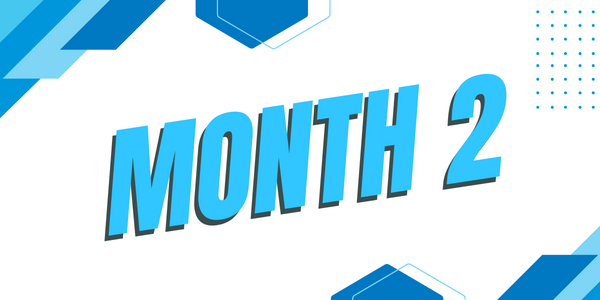
Month 2 | What to do after you’re laid off
Once you’ve written down your accomplishments, filed for unemployment, and sorted out your health insurance, the next steps to take are less pressing (but still very important).
During month 2 after you’ve been laid off, you’ll want to do the following:
- Rest & reflect
- Figure out your career plan
- Reach out to learn about career options
Let’s break down each of these recommended steps.
Rest & Reflect
As we’ve talked about, being laid off sucks. It is a very emotional experience and often “powering through” can be a mistake.
When I was laid off from my job, I tried to power through by jumping straight into applying for jobs and I actually regret it.
What I didn’t realize at the time is that by jumping straight into a job search I was actually setting myself up for another failure.
Of course, at the time I didn’t know this.
Here’s what happened:
- I obsessively tweaked my resume
- Applied to 15 jobs per day
- Interviewed at a few companies
- And took the first job I could find
Success! Right?
Wrong.
The job I took was a pretty bad fit and I actually ended up having to go through the entire job search process just 9 months later because I hated it there.
When I was laid off I was disparate for money, so if you’re in a similar situation I don’t blame you for taking this approach.
But, if you can afford to take just 1–2 months off, I highly recommend it.
During your second month after being laid off, I recommend taking time to just think and reflect on your career.
While it’s okay to look at jobs for inspiration, I recommend avoiding applying to jobs right now.
Instead, first take some time to get some career clarity.
Here’s how…
Figure out your career plan
Some people say that getting laid off was the best thing that ever happened to them.
That’s because sometimes a forced stop can help shock us out of our normal thinking and help us pull back the curtain a bit.
One of the most useful ways of evaluating where you stand in your career is with this pyramid by Chip Conley, former Head of Hospitality at AirBnB:
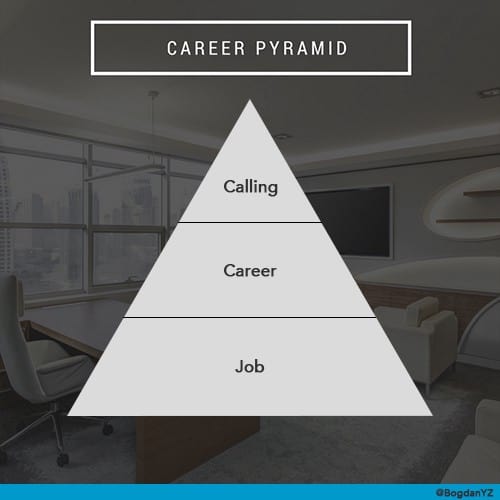
Chip explains that Jobs are very common and very easy to get, but they hold our satisfaction briefly. Most of us search for a Career and once we find it we’re pretty satisfied for a long time.
It’s only later in life that we realize what we really need is a Calling. A Calling is very, very difficult to discover but it will take you the furthest.
When we’re in the middle of the day-to-day grind of our jobs, it’s very hard to think about our careers, let alone our Calling.
That’s why one of the best things you can do after you’re laid off is use the time to think about your Calling.
But, how can you possibly find your Calling?
Here are a few recommended techniques to find your career calling:
1. Look to your youth
A great way to seek out your Calling is by looking at what you were interested in during your youth. In particular, what did you do when you were younger where you lost track of time?
For Chip, he remembers he would cook and serve dinner for his family every weekend by making a restaurant in their living room. He loved taking care of people. Which, he later realized, is exactly why he was attracted to AirBnB. It was about creating experiences where people are taken care of.
2. Look for your habitat
The second way to seek out your Calling is by looking at what environments you feel most comfortable in. Do you enjoy being in small groups? Maybe a small 30 person startup might suit you better than a big corporation.
Do you enjoy being outside and moving? Maybe a lucrative career in solar sales could be just what you need. Do you enjoy spending months building something big and bold? Maybe a career in events planning is right up your sleeve.
There are a thousand ways to think about this question and only you will know what type of environment really makes you feel good and energized. Try to take some time and think about what is that habitat that you gravitate towards outside of work. This will unlock new ideas of what kind of work you really want to do.
Reach out to ask people about their careers
After you’ve spent a good amount of time thinking about your next career move, the next step to take is to actually find out if your intuition is correct.
This can be one of the scariest steps to take after being laid off, but it is also one of the most productive.
Rather than staying inside your head, try venturing back out into the world (metaphorically speaking).
Try this:
- Look up people who have the job you’re intersted in
- Message them on LinkedIn (you can use the example message below)
- Ask them what they like about their job and if they would recommend it
- Repeat this with 3–4 people to get a good sample size
This is something I wish I had learned about earlier in my career, but now that I know how to do it, I’m never going back.
A lot of times we’re afraid to ask people for advice. After all, we don’t want to “bother them.”
But, this couldn’t be further from the truth.
People love giving advice. After all, it’s flattering to be asked for your opinion. It signals that “you’ve made it.”
Imagine what your reaction would be if someone messaged you and said the following:
Hi [name],
My name is [your name] and I was hoping I could get your quick opinion? I’m in the middle of making a career transition and I was wondering how you like being [their title]?
I’m not here to ask for a job or pitch you on anything. I’m just trying to figure out if a similar career path might be right for me.
Thank you for your time and any advice you might be able to offer!
[Your name]
Short and sweet. Asking people for advice actually makes them feel better and it can provide better insights than any amount of research you could do on your own.
Even if you’re not looking to change careers, this is still very useful to figure out which company you might want to work for.
When I was applying to jobs, I used this technique at one of the target companies I was interested in.
The result?
The person at the company said that it was pretty awful working there and that they were actually about to leave!
With a 5 minute LinkedIn conversation, I saved myself at least 6 months of misery!

Months 3–6 | What to do after you’re laid off
After you’ve figured out your general career plan, the final thing to do after being laid off is to start the job search process.
As I mentioned earlier, depending on your financial situation and needs you may want to start this process earlier. Regardless of when you choose to start your job search, however, the process of your job search should be the following:
How to get a job after being laid off:
- Create your job search schedule
- Learn about the job search process
- Apply to jobs
- Practice interviewing
- Start your networking
This might seem like a lot of steps, but a lot of these are very simple once you use the resources below.
Let’s break each step down.
Step #1 | Create your job search schedule
As we talked about earlier, getting hired is a marathon, not a sprint. Just like in a marathon, you’ll have varying amounts of energy during your job search.
Don’t worry if you do.
The best way to prevent yourself from getting job search fatigue is by creating a job search schedule.
This will prevent you from making one of the most common mistakes in job search: applying to too many or too few jobs.
Believe it or not, this is one of the most common reasons that people lose momentum during their job search.
Applying to too many jobs
Although at first it may seem like a good idea to apply to as many jobs as possible, it can actually be pretty detrimental.
Applying to too many jobs can hurt you because:
a) If you have a flaw in your resume you’ll send a bad resume to a lot of companies and ruin your opportunity with them.
b) If you don’t land any interviews (because of a bad resume) you will kill your morale and lose your momentum.
Applying to jobs is a process of trial and error. It’s best to apply to a handful of jobs and then see if you get responses first.
If you do, continue applying.
If you don’t, make changes before applying to more.
Applying to too few jobs
The opposite of this is also true. Applying to too few jobs can hurt you because you won’t be gathering enough data to know if what you’re doing is effective or not.
This happens very often to job seekers who try to be too “intentional” (aka picky) about the jobs they apply to.
At first, you want to apply to a good amount of jobs so you can test if your resume and messaging are working or not.
So, how many jobs should you apply to?
The magic number is… 25!
What I’ve found to be most effective is applying to 25 jobs per week. This gives you enough of a sample size to learn from, but is small enough that you won’t get burned out.
You can read more about how many applications you should send to land a job in my guide here.
Here is a general job search schedule to follow:
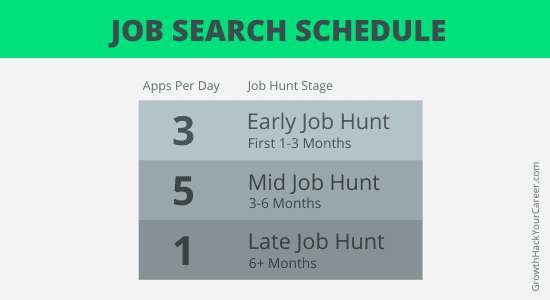
Step #2 | Learn about the job search process
After you’ve figured out your job search schedule, the next step you’ll want to take is to create your resume and cover letter.
Remember that list of accomplishments we wrote down during month #1?
This is where it pays off!
(If you never made your accomplishments list, don’t worry, I’ll show you how to create one in a minute.)
To get started on your resume, I recommend watching our free resume course.
It will teach you:
- How to showcase your strengths
- How to write eye-catching bullet points
- How to choose which experience you share
- How to make sure your resume is ATS-friendly
- And a whole lot more…
Being good at your job is very different than searching for a job. In fact, job searching is it's own skill altoghether. A perfect example of this is how to beat the ATS (applicant tracking systems). If you're not sure what that means, I highly recommend reading the post linked above.
All of our job-winning courses are free, so if you want to start learning the right job search skills, you can get all 3 courses by dropping your email here and they’ll be sent straight to your inbox:
In addition to watching the Resume Course you’ll also want to learn about some of the more “hidden” aspects of the job search process.
These include:
9 Secret ways that recruiters rank you (and how to rank higher)
40 Best job search sites to apply on to increase your chances
How to achieve “All-Star” status on LinkedIn so recruiters find you
And if you’re an older job seeker: How to avoid age discrimination in your job search
Step #3 | Practice Interviewing
Once you have your resume sorted and you’re in the swing of your job search, the next thing to focus on are your interviewing skills.
A lot of professionals who are laid off make the mistake of thinking that they can skip this step.
You might be thinking, “O, I’m great at job interviews. Plus, my performance reviews were fantastic before I was laid off!”
I don’t blame you for thinking this. In fact, this is how I felt when I was first laid off.
What I found out (quite painfully might I add) is that how good you are at your job has no correlation with how good you are at your job search.
I repeat: how good you are at your JOB has no correlation at how good you are at your JOB SEARCH.
The worst thing you can do to yourself is go through all of the steps we talked about above. Spend hours on your resume. Spend hours on your LinkedIn.
And then throw it all away on a bad interview.
Brushing up on your interview skills doesn’t have to take much time.
In fact, you can dramatically improve your interview skills in less than 60 minutes just through a few simple steps.
I recommend reading the guide above and following the steps.
Those 60 minutes can shave months off your job search, so it’s a worthwhile investment for sure.
While you’re at it, you’ll also want to figure out how to explain being laid off during your interview (as it will most likely come up).
Step # 4 | Start your networking
The last thing to do after you’ve been laid off is to start building your network back up.
According to studies, over 85% of jobs are found through networking. Now, I think this statistic is slightly exaggerated.
After all, if it were true then sites like Indeed, Monster, or LinkedIn wouldn’t be nearly as lucrative as they are.
But, regardless of what the exact percentage is, networking can definitely help you in your job search.
Now, to some people the term “networking” can be a bit cringe-worthy (I know it certainly was for me).
The truth is that networking doesn’t need to involve going to awkward meetups and trying to sell yourself.
The way that I recommend networking is through small weekly actions that build up over time.
In this guide I explain exactly how to network for a job and share a formula that you can use: The Ultimate Guide to Network for a Job.
I also recently invited Career Expert, Alif Huq, to share his stress-free networking strategy with our exclusive members-only group.
Here is how Alif suggests thinking about networking:
Takeaways & Next Steps
Okay that was a LOT of steps to cover. But, like I mentioned, the job search process takes time, so don’t feel like you have to do all these steps right away.
Instead, I recommend bookmarking this page and coming back to it as you move through your job search process.
The best thing to do when you’ve been laid off is to form a plan and focus on one area at a time.
If you’ve just been laid off, focus on the steps in Month 1.
If you’ve been laid off for awhile, you can jump straight to Months 3–6.
Regardless of where you are in your job search process, remember that it’s best not to go at it alone.
If you’d like help with your job search, feel free to join our free courses and workshops here.
And, if you would like 1-on-1 help or have specific questions, you can join our members-only group and chat with me directly here.
No matter what you do though, remember that you are valuable, you are capable, and you will land a great job eventually!
More from the blog
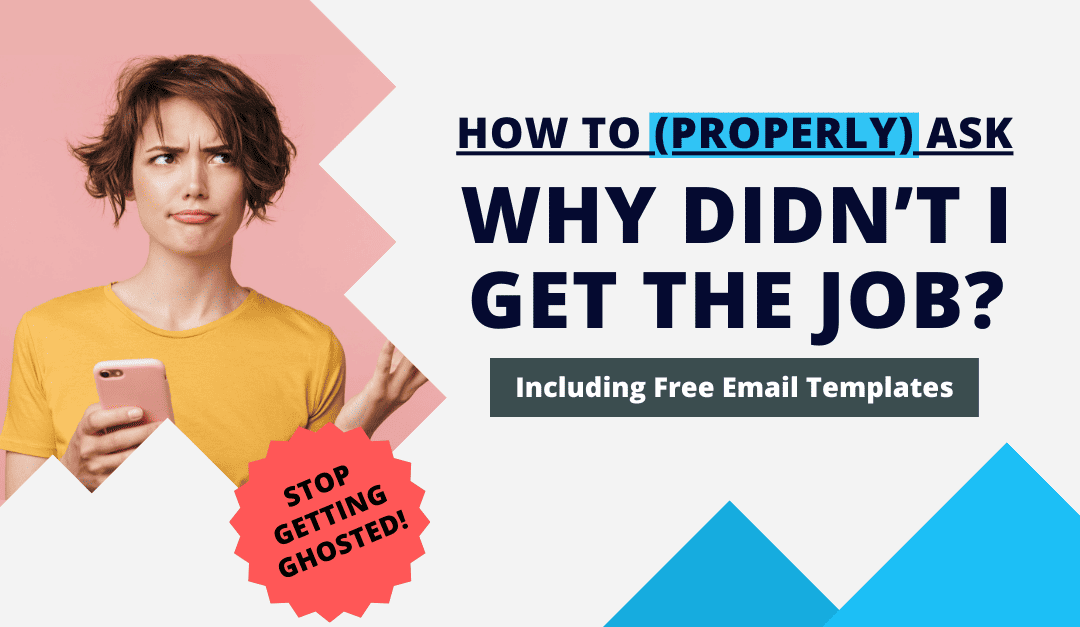
How To Ask Why You Didn’t Get the Job (That Will Actually Get a Reply)
How To Ask Why You Didn’t Get the Job (that will actually get a reply) "Thank you for your...
77 LinkedIn Headline Examples That Will (actually) Get You Noticed
77 LinkedIn Headline Examples That Will (actually) Get You Noticed According to a recent JobVite...
7 Creative Job Application Ideas To Get an Employer’s Attention
7 Creative Job Application Ideas To Get an Employer’s Attention If you’ve been applying to jobs...
Like this? Try our free courses!
Tired of sending your job applications into a black hole and never hearing back? Get hired faster with our guided courses all for FREE!
Bogdan Zlatkov is the Founder of GHYC and author of "The Ultimate Guide to Job Hunting", ranked #1 on Google. He has been featured in the Wall Street Journal, Fast Company, HR Dive, and more. At GHYC, Bogdan creates job search courses & tools by working with award-winning career coaches, best-selling authors, and Forbes-Council members. Prior to GHYC, Bogdan led the content programs at LinkedIn Learning.